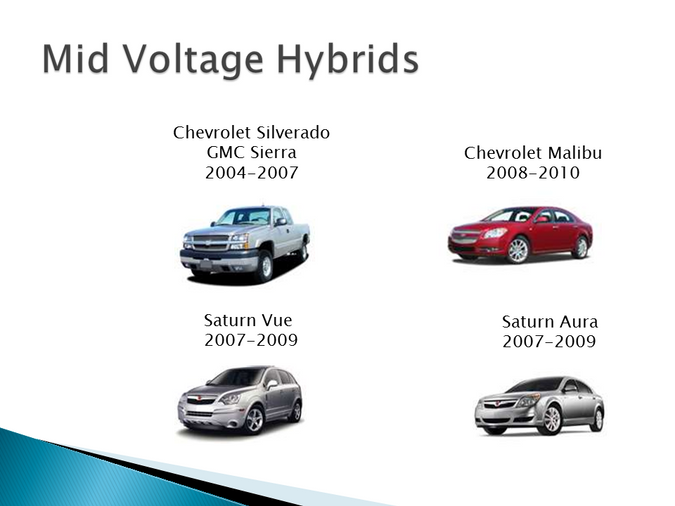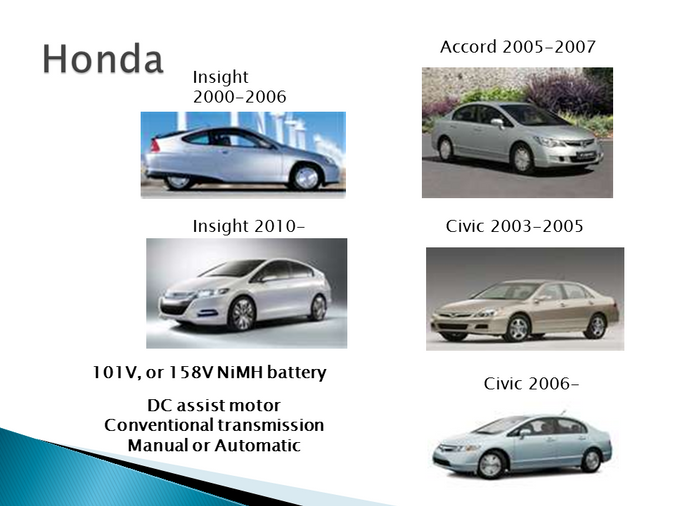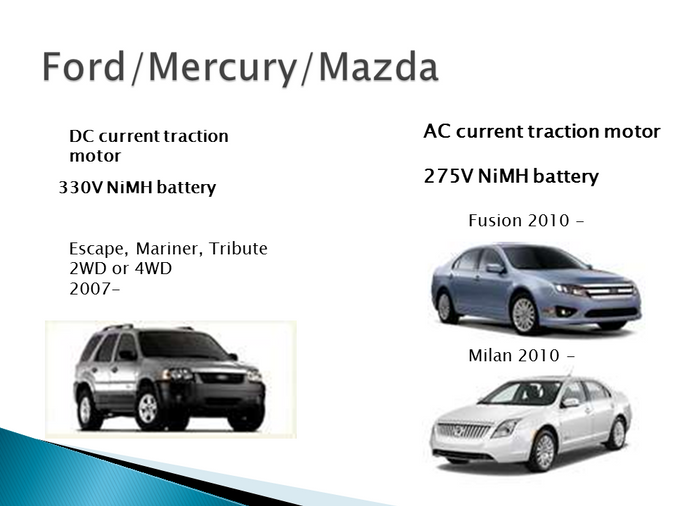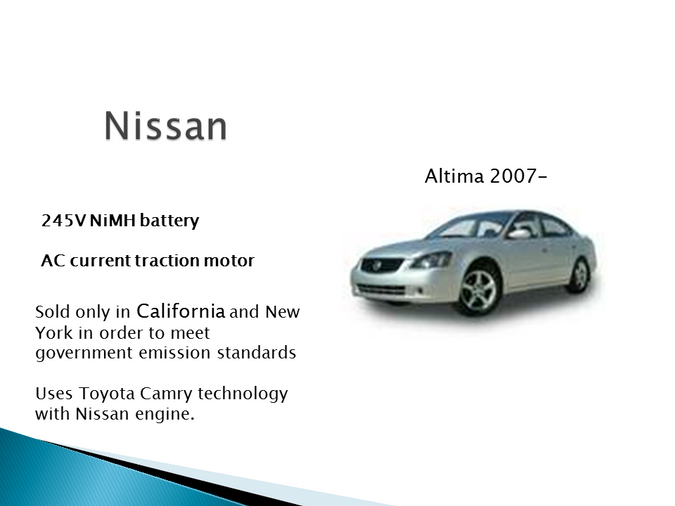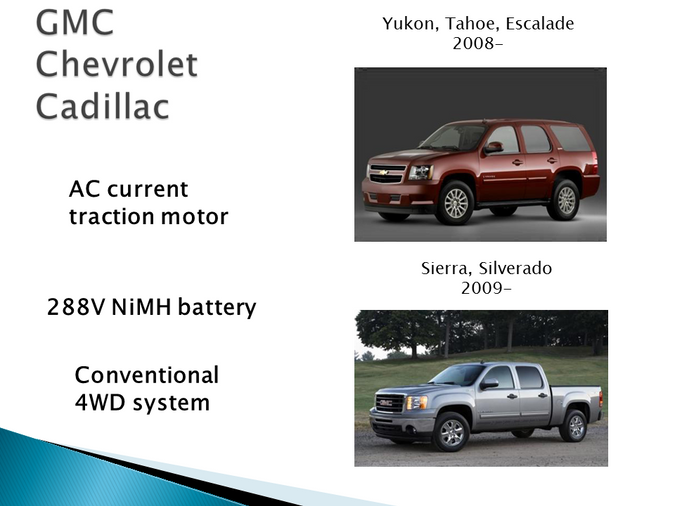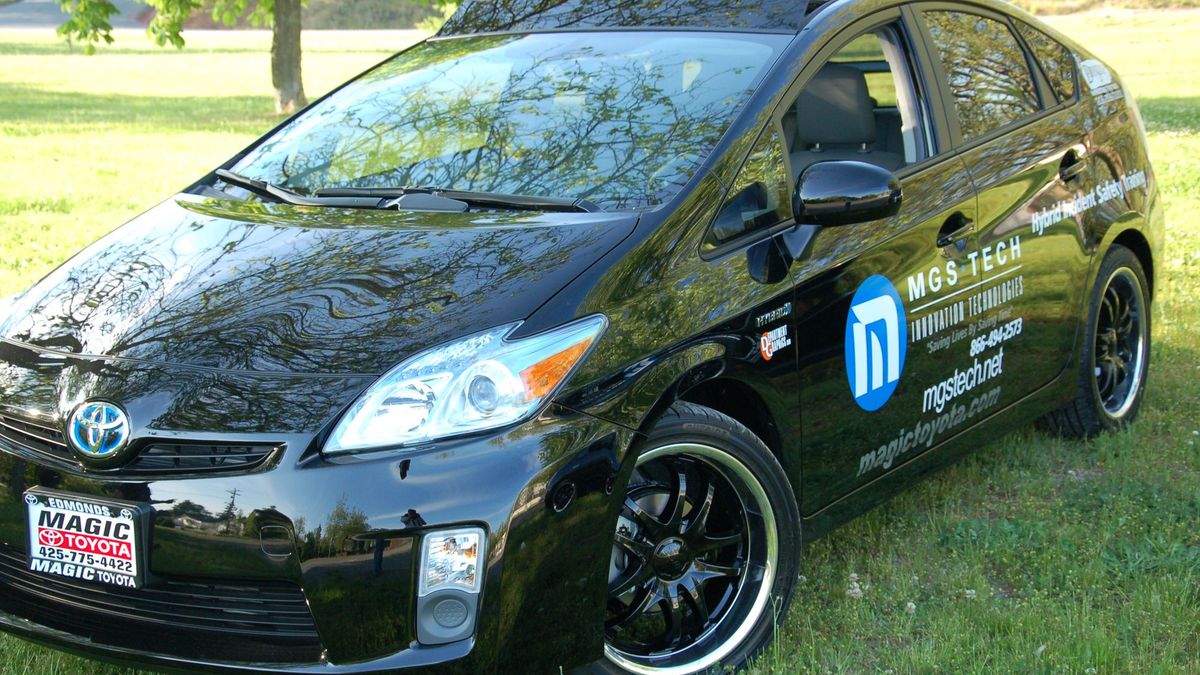
Hybrid Models Around Us Today
March 18th, 2010
Categories
by Paul Bindon & Matt Stroud
Hybrid vehicles are becoming more and more common on the road today. Is the commuter bus next to you in traffic a Hybrid? In some cities, it certainly is. The car in front of you may look like a normal car, but in some cases it’s the Hybrid version that uses the exact same body style. Identifying Hybrid models is not as straightforward as it may seem. Hybrid vehicles pose new challenges to first responders who must be prepared to understand vehicle technology when responding to motor vehicle accidents (MVA’s). In our last article, we outlined “What is a Hybrid”. Here we will be discussing the different types of Hybrid systems and models on the road today. Several different types of Hybrid vehicles have been produced by auto manufacturers to date. Understanding the differences in these vehicles will help to make critical decisions in the field, saving valuable time when injuries are involved.
Hybrid vehicles exist in several different battery voltages and drive types. They range from “Mild” Hybrids (36 volt systems) up to the heavy truck and bus systems (800 volt systems). The following will outline the similarities and differences in these systems.
Mid-Voltage Hybrid
Mid-voltage Hybrids were introduced by General Motors initially in their Chevrolet Silverado and GMC Sierra pickups in 2004. These trucks obtained improved fuel economy by using start/stop technology to shut off the engine during deceleration/regenerative braking and when the vehicle was stopped. Some reduction in emissions is also achieved as compared to their conventional counterparts. The number of models increased in 2007 with the Chevrolet Malibu and the Saturn Aura. 2008 saw the introduction of a small Saturn SUV called the Vue Greenline.
Mid-voltage Hybrids use 3 batteries connected in series to produce 36 to 42 volts. This voltage allows the use of a powerful starter motor/generator that is built into the transmission. Mid-voltage Hybrids use blue wires to indicate wiring that contains 36-42 volts. The voltage contained in these systems present an increased arc hazard, but do not contain a lethal amount of voltage. They therefore do not pose the same hazards as full Hybrid vehicles. Mid-voltage Hybrids can be handled as a conventional vehicle when performing power down procedures. It must be noted that mid-voltage Hybrids, like all Hybrids, contain a separate 12 volt system which powers all conventional systems including SRS, HID headlights, power windows, etc. Mid-voltage Hybrids do not contain a high voltage battery, orange wires or a high voltage motor that drives the wheels.
Considered by some to be “mild Hybrids”, these vehicles do not offer the fuel economy improvements or emissions reductions that are possible with higher voltage systems. They also do not offset the added cost of the Hybrid system over its outwardly identical conventional counterpart.
Full Hybrid
Full Hybrid vehicles are able to use electric motors to drive the vehicle wheels directly, or assist in driving the wheels through a conventional transmission. They differ from mid-voltage Hybrids because they use battery packs that contain from 100 to 800 volts. Not only do full Hybrid vehicles use start/stop technology, they also allow the vehicle to store energy that would normally be lost during braking, by generating power that is stored in the high voltage battery. Significant increases in fuel economy and emissions reduction are possible by using these higher voltage systems. Since the voltage contained in these systems is over 60 volts, the automotive industry standard orange wires are used wherever high voltage may be present. All full Hybrid vehicles contain a high voltage battery, orange wires and a high voltage motor(s). Currently, there are three different types of technologies used in full Hybrid vehicles; Series Hybrid, Parallel Hybrid & Series/Parallel Hybrid.
Series Hybrid
Series Hybrids, a type of full Hybrid vehicle, do not have a direct connection between the engine and the wheels. The engine drives a generator which provides electric power for either the battery (power storage) or the electric motor (driving the wheels). Examples of this type of Hybrid include the Chevy Volt, full size transit buses produced by New Flyer & Gillig, and heavy trucks produced by International, Kenworth and others. Increases in fuel economy and emission reduction are made possible by using the engine at its most efficient speed, shutting off the engine when decelerating or at a stop and by charging the batteries during regenerative braking.
Parallel Hybrid
Parallel Hybrids, a type of full Hybrid vehicle, use electric motors to assist the engine in driving the wheels through a conventional transmission. The electric motor is located between the engine and the transmission. Honda pioneered this technology with the “Integrated Motor Assist” system that was first found in the 2000 Honda Insight. The Mercedes S400 also uses a motor assist system to help drive a conventional type transmission. These systems use start/stop technology, motor assisted motion as well as regenerative braking to increase efficiency.
Series/Parallel Hybrid
Series/Parallel Hybrids, the most common type of full Hybrid vehicle, can use the electric motor alone or in combination with the engine to drive the wheels. The drive motor also charges the battery during braking. The engine can also power a generator to produce power for motor use or storage in the high voltage battery. A/C voltage is used in most vehicles to increase the efficiency of the motor(s). These systems use start/stop strategy, regenerative braking and the most efficient engine operation speed to significantly reduce fuel use and emissions.
As you can see, Hybrid vehicles vary greatly with different drive types and voltages. Understanding the differences between Mid-Voltage Hybrids and Full Hybrid vehicles will help first responders effectively evaluate the MVA scene and take appropriate action.
Our next article “Hybrids, Electrical Theory & Circuits” will focus on explaining basic electrical theory and how it pertains to the automobile industry.
